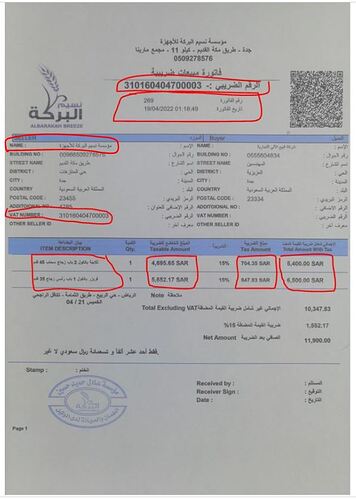Hello All,
I am trying to read an .PNG, JPEG image and need to extract the text from that image. The extracted information is Invoices image I want to write those information in Excel sheet. I re-used the code published from the provider:
ExtractTable - API to convert image to excel, extract tables from PDF , here is the code:
## Load required R packages (must be installed first)
install.packages(c("magrittr", "jsonlite", "httr"))
require(magrittr)
require(jsonlite)
require(httr)
# Main Functions
## Parse Server Response
parseResponse <- function(server_resp) {return(fromJSON(content(server_resp, "text", encoding="UTF-8")))}
## Function to Check credits usage
check_credits <- function(api_key) {
validate_endpoint = 'https://validator.extracttable.com'
return(content(GET(url = validate_endpoint, add_headers(`x-api-key` = api_key)), as = 'parsed', type = 'application/json'))
}
## Function to Retrieve the result by JobId
retrieve_result <- function(api_key, job_id) {
retrieve_endpoint = "https://getresult.extracttable.com"
return(
GET(
url = paste0(retrieve_endpoint, "/?JobId=", job_id),
add_headers(`x-api-key` = api_key)
)
)
}
## Function to trigger a file for extraction
proces_file <- function(api_key, filepath) {
trigger_endpoint = "https://trigger.extracttable.com"
return (
POST(
url = trigger_endpoint,
add_headers(`Content-Type`="multipart/form-data", `x-api-key` = api_key),
body = list(input = upload_file(filepath))
)
)
}
## Function to extract all tables from the input file
ExtractTable <- function(filepath, api_key) {
server_response <- proces_file(api_key, filepath)
parsed_resp = parseResponse(server_response)
# Wait for a maximum of 5 minutes to finish the trigger job
# Retries every 20 seconds
max_wait_time = 5*60
retry_interval = 20
while (parsed_resp$JobStatus == 'Processing' & max_wait_time >= 0) {
max_wait_time = max_wait_time - retry_interval
print(paste0("Job is still in progress. Let's wait for ", retry_interval, " seconds"))
Sys.sleep(retry_interval)
server_response <- retrieve_result(api_key, job_id=parsed_resp$JobId)
parsed_resp = parseResponse(server_response)
}
### Parse the response for tables
et_tables <- content(server_response, as = 'parsed', type = 'application/json')
all_tables <- list()
if (tolower(parsed_resp$JobStatus) != "success") {
print(paste0("The processing was NOT SUCCESSFUL Below is the complete response from the server"))
print(parsed_resp)
return(all_tables)
}
### Convert the extracted tabular JSON data as a dataframe for future use
### Each data frame represents one table
for (i in 1:length(et_tables$Table)) {
all_tables[[i]] <- sapply(et_tables$Tables[[i]]$TableJson, unlist) %>% t() %>% as.data.frame()
}
return(all_tables)
} #end of function
# Usage
## Intialize valid API key received from https://extracttable.com
api_key = ""
# Validate or check credits of the API key
credits <- check_credits(api_key = api_key)$usage
input_location = "E:/OCR Test/Test Bill.jpeg"
Excel_location = "E:/OCR Test/"
# Trigger the job for processing and get results as an array of dataframes
# Each data frame represents one table
results <- ExtractTable(api_key = api_key, filepath = input_location)
Size<-length(results)
i=1
for(i in 1:Size) {
# No<-as.character(i)
write.xlsx2(results[[i]], paste(Excel_location, "data_all.xlsx"), row.names = FALSE, sheetName = paste("Sheet", as.character(i), sep=""), append = TRUE) # Append other data frames
}
I’m using also (tesseract) to do some processes including (arabic language) , I need to draw a Bound box on the Invoice to extract the Column (Information needed) and paste it in Excel sheet , can any one help me on how to draw Bound box on the Invoice image and paste it on excel sheet?
Note : Attached a sample for the Invoice where I want to paste the column bounded in red need to be paste in the excel sheet.

